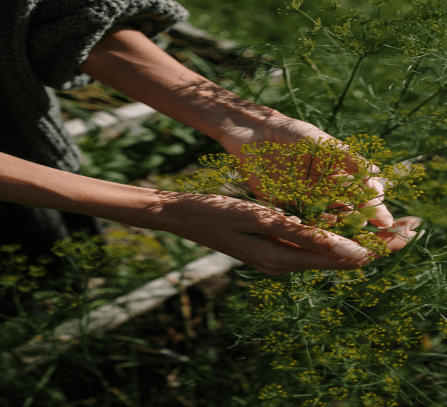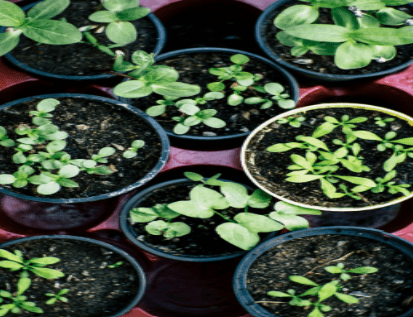In case you missed it see what’s in this section
Let's Talk
Elevate Your Garden To New Heights: Essential Techniques For Improvement
Introduction
Gardening is a hobby and an essence of life for many of us!
Adding new heights to your garden means adding structure, privacy, and interest. Improving the overall garden leads the eye and creates a focal point around the space.
We will guide you through every step, from selecting the right corner of your backyard to designing the garden beds.
Thus, you can use different techniques to redesign your garden space by incorporating vertical elements to add seasons of flowers. If you are looking for seasonal blooms, there are My Global Flowers. They offer fresh flowers and deliver them instantly right after you place an order.
Are you ready to unlock the secrets to a garden bursting with abundance?
In this article, we will emphasize different techniques for elevating your garden to new heights and improving it.
Why Is Height Important In A Garden?
By including vertical features and planting upwards, you will improve the overall appeal and functionality of the outdoor space. Thus, adding new heights refers to creating an interest and expanding the growing space.
However, some features, such as screens, can add an aesthetic and offer privacy and seclusion while overhead of the structure. For instance, pergolas, gazebos, and arches create shades and relax beneath mid-summer warmth.

List Of Techniques To Improve Your Garden
Here is a list of techniques to help you improve your overall garden.
1. Add An Arbour
An arbour is a magnificent addition when placed at the end of the pathway.
Curling up with a hot cup of coffee in a sheltered garden is one of the simple pleasures you can experience in garden life.
Similarly, an arbor is the perfect structure within which to relax. Similarly, you can lean towards a traditional and contemporary design; an arbor offers a wonderful, secluded nook to space.
On the other hand, the lattice sides and the study timber structure also serve as a massive support for your plants. You can plant roses, ivy, and lilies, adding a natural beauty touch to the arbor.
Therefore, adding an arbor adds to the visual attraction and draws your attention to explore further.
2. Create Privacy With Graden Screen
If your patio is exposed to preying eyes, garden screening can create private zones within the garden.
Thus, creating a private space works wonders in dividing different areas within the garden. It can divide garden areas or a gardening space for growing your favorite herbs.
Similarly, the garden screens can be highly beneficial even for an area with a hot tub and yoga space.
On the other hand, adding screens offers functionality, but they also serve as attractive design features. Moreover, you can use them to showcase garden art and hand planters, creating a rustic touch to the garden space.
3. Grow Plants Upwards
Vertical planters and living walls are another way of adding height. It further adds the benefits of softening expanses of brickwork and fencing.
Furthermore, growing plants upwards also increases the growing space significantly. Similarly, you will love to see vegetables, flowers, and climbers growing upward.
Therefore, ferns and succulents look amazing when grown on vertical planters.
4. Shelter The Entertaining Area
You can create a sheltered area within a pergola. Therefore, pergolas offer heights and make a real statement piece in the garden.
Place the pergola over the deck or patio. It offers an effective solution for building dappled shade and is even more effective when placed over a recreational space.
Thus, you can easily opt for one with or without a canopy if you are after a pergola.

5. Create A Line Of Pathway
Are you planning to add an archway to divide the areas of the garden? Or are you planning to strike the entrance to a certain garden zone?
Select a set of three sleeper arches to add a spectacular feature.
On the other hand, one of the most habitual and eye-catching places for an arch is at the patio's entrance. You can place an arch to welcome the visitors and set a tone for the rest of the garden.
Moreover, if your garden has winding pathways, you can include an arch along the path to create a magical and whimsical feel.
6. Create Multi-Level Planting Area
With the aim of adding interest and heights to the outdoor area, heights do not necessarily mean you need to reconstruct the place.
You can add raised beds, and a tall cultivator will add many gradients and levels to your garden. Similarly, they make your garden easy to access, and deep soil offers plants ample space to root down and thrive.
Besides, you can use tall planters, and our corner planters can create clever borders around the seating area and place different foliage of varying heights.
7. Hang An Array Of Pots
Hanging pots and baskets are a great way to add instant interest, allowing you to change your display as often as you like.
Thus, it is not just flowers that will elevate the space. Even other varieties of edible herbs and plants will work well, specifically handy if positioned near the outdoors.
On the other hand, you can also use a stacking container with multiple apertures, such as a pallet. You can fix it on the wall to plant small herbs, fruits, and vegetables.
8. Create a Living Wall
A living wall has a multitude of uses. They can:
- Add height.
- Offer insulation.
- Deflect water away from walls in heavy rain.
- Create a habitat for insects.
- Reduce noise pollution.
- Offer aesthetic benefits.
Despite using single climbing plants, adding a living wall will give you space to grow a mix of herbaceous plants. It can be ferns, sedums, succulents, and heucheras.
On the other hand, you can buy living wall systems in garden centers. Thus, they are often consistent with a planting pod framework and attached to an irrigation system.
9. Cultivate A Few Lofty Edibles
If you have a small area for gardening but are still dreaming of being self-sufficient, many dwarf varieties of shrubs and trees are available. Therefore, select the right fruit, flower, or hern in each post.
Therefore, heights within the small garden can be achieved by planting espaliers against the fence and lining them with small but productive fruit trees.
In addition, the dwarf stocks might vary specifically if you are grafting and will also do well in large containers if they get enough sun and water.
Hence, in addition to pears, apples, cherry, and plum trees, you can access a variety of dwarf nectarine and peach trees. These trees will need more protection, specifically from cold winds and frost.

10. Raise Garden Beds
Raise garden beds will make your garden look taller.
Thus, you can also use the change in levels to great effect by creating pots at a higher position than they would normally be.
Therefore, frees with a single clear stream and a boundary fence or wall will accentuate height and length. Hence, keep the top layer green, as it will give a visual of the hedge from a higher level.
Moreover, you can also grade the soil to create a mound. So, ensure your plant is placed at a higher point. It will eventually invite drama into a flat space.
Various Raised Bed Gardening Techniques
Raised beds are like an army of knives of horticulture. Thus, you need to maximize the harvest by gardening the raised beg.
This technique is helpful to explore a range of methods that will help you make the most of gardening methods.
Here is a list of techniques that will unlock the full potential of your raised bed garden.
1. Traditional Raised Beds
Traditional raised beds are the foundation for upgrading the garden, offering versatility and simplicity.
- Time-Tested Materials: Classical raised beds are often constructed using durable materials like metal and wood, offering a reliable frame for your garden.
- Ease Of Construction: durable materials can be easily assembled, thereby making traditional beds an accessible option for gardeners of all skill levels.
- Aesthetic Appeal: metal frames provide a modern touch, while wooden frames add a rustic look. These resources will allow you to customize the look to complement your garden’s style.
- Customizable Heights: The garden can height the raised beds based on personal preference, ensuring a comfortable and ergonomic gardening experience.
- Reduce bending And Stooping: Elevating the garden bed reduces the requirements for bending, making it more accessible for individuals with accessibility factors.
2. Hugelkulture Beds
Hugelkultur beds support a sustainable and regenerative approach, utilizing organic material to enrich the soil.
- Wood-Based Compositing: hugelkulture involves layering logs, organic matter, and branches, promoting natural decomposition.
- Retention Of Water: the decomposed wood functions like a sponge to retain moisture and provide a consistent plant water source.
- Reduced Need For External Inputs: Hugelkutur reduces reliance on external fertilizers, which promotes a self-sustaining ecosystem.
- Resilient To Drought: Improved water retention makes the bed resilient to drought circumstances.
- Nutrient-rich soil: As the organic material breaks down, it releases nutrients into the solid and creates a nutrient-rich environment.
- Carbon Sequestration: The decomposition of organic material sequesters carbon in the soil. Contributing to environmental sustainability.
3. Container Gardening
- Container gardening takes raised bed principles to new heights, offering a mobile and space-efficient solution.
- Controlled Surrounding: containers control the soil composition and moisture, catering to plants' needs.
- Versatility in Plant Selection: Ideal for growing various plants, from flowers to herbs, in a confined space.
- Portability: Containers allow for mobility, rearranging the garden layouts to optimal sunlight conditions.
- Aesthetically Pleasing: Well-suited for gardening enthusiasts who might need access to the traditional garden plot.
- Limited Space Solution: Perfect for balconies, small yards, and patios where ground space is scarce.
Benefits Of Raised Bed Gardening
Below-mentioned is a list of benefits of using a raised garden bed.
1. No Tilling
Not only is tilling time-consuming, but it can also determine the soil's long-term health. It will further help incorporate organic material and oxygen necessary for healthy growing conditions.
Thus, as you till the soil, you will be exposed to more soil practices to sunlight and air, reducing the soil’s ability to retain moisture.
2. Beter Drainage And Control
Areas prone to clay soil tend to drain poorly and leave the garden saturated. Conversely, sandy soils can drain quickly, requiring more frequent watering.
Neither of the scenarios mentioned above is suitable for garden beds as it depends on the climate. Moreover, you can adjust the manure to gain water retention and drainage.
Furthermore, including compost in the soil can significantly improve water retention. Compost can hold 20 times its weight in water.
3. Enhanced Soil Quality
The soil’s composition can directly affect the health of the plants. Inferior soil conditions can lead to deficiencies and stagnant growth.
Hence, a raised garden bed will allow plants to grow in areas that would otherwise not support healthy plant life.
In addition, raised garden beds prevent the soil from routine watering and rain erosion. The elevated sides of the patio beds can act as a wall, thereby stopping the soil from cleaning away.
4. Choose The Right Raised Graden Bed
You should select the right raised garden, considering the heights, the overall size of the patio, and the material you use.
For many of you, building a raised garden bed from scratch requires building supplies, expertise, and tools.
Furthermore, wood can be cost-prohibited. But raised bed gardening can be simple and simple.
5. Weed And Pest Control
As raised bed gardens are positioned above the lawn, they are less susceptible to controlling growing weeds.
Therefore, fewer weeds mean less maintenance and more time to enjoy the outdoors with family and friends.
On the other hand, raised garden beds are most likely to be planted, leaving little room for growing weeds. Thus, it is easier for them to pull from the loose soil when they pop up.
Ready To Take Your Garden To New Heights?
Thus, mastering the art of raised garden bed gardening is the key to reaping a massive harvest.
Therefore, you can explore expert techniques and insider suggestions mentioned in the above section.
From multiple benefits of raised bed gardening to expanding plant density and maintaining soil health, each step plays an integral role in ensuring gardening success.
So, as we cultivate our garden, we can also grow our own connection and knowledge with nature.
Weather in Bath
Listings

















